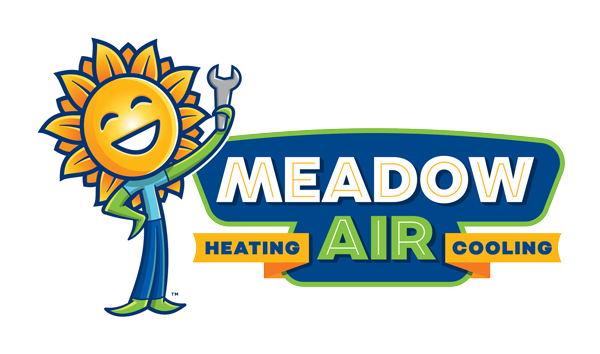How to Test Air Quality in Your Home

We all are familiar with the buzz around outdoor air pollution, and yet, the air inside our own homes often gets overlooked.
You might not see it, but the air in your living space could be hosting an unwelcome party of pollutants, from unseen mold spores to invisible chemical contaminants.
The sobering fact is this: The air you breathe in your home might not be as clean as you believe. According to The EPA (Environmental Protection Agency), indoor air can be 2-5 times more polluted than outdoor air. This means the environment we consider safest might pose unseen threats.
Clear Signs Your Indoor Air Quality Might Be Taking a Hit
While you can’t see or smell many of the pollutants potentially affecting your indoor air quality, there are certain signs and symptoms that can alert you to a possible problem.
Here’s a rundown of what you should look out for:
Experiencing Allergy-Like Symptoms
Ever had those sneaky allergy symptoms crop up while you’re inside your house? We’re talking sneezing, watery eyes, a runny or stuffy nose, or itchy skin. These reactions might be your body’s response to invisible indoor allergens.
Frequent Respiratory Discomfort
If you’re frequently coughing, having shortness of breath, or experiencing other respiratory issues, especially when you’re home, this might be due to poor air quality. Indoor pollutants can irritate our respiratory system, causing these symptoms.
Persistent Headaches and Fatigue
Exposure to indoor pollutants can sometimes lead to frequent headaches or a feeling of being unusually tired or lethargic. If you notice these symptoms easing when you leave your house for a while, it might be that your indoor air quality is the culprit.
Unexplained Odors
If there’s a strange, unplaceable odor that just won’t leave your home, it could indicate poor indoor air quality. Certain pollutants and molds can create distinctive smells.
Increased Humidity
High indoor humidity levels can contribute to poor air quality by encouraging mold growth and dust mites. If your windows are often foggy, or if your living space feels excessively damp and clammy, your air quality may need some attention.
Visible Mold and Mildew
Seeing mold or mildew around your house, especially in areas like the bathroom or kitchen, is a clear sign of potential air quality issues. Mold spores can spread through the air and cause health problems when inhaled.
How to Test Indoor Air Quality
There are numerous ways to test air quality in your home ranging from convenient DIY test kits to professional testing services.
Here are the most common methods.
DIY Test Kits
A DIY air quality test kit is one of the easiest ways to determine whether or not your home has a problem with indoor air quality. These kits are available for purchase online, at hardware stores and even some grocery stores.
Some of the most common types of DIY air quality test kits include:
Mold Test Kits
These easy-to-use kits typically involve collecting samples of air or surface swabs from around your home and sending them to a lab for analysis.
The idea is to check for the presence and types of mold spores, which can cause allergies and other health problems. Remember to follow the instructions on the package closely to ensure an accurate test.
While these kits provide a good first glance into your mold situation, they might not be able to detect hidden mold or pinpoint the mold’s exact location.
Dust Mite Kits
Dust Mite Kits are used to detect the presence of dust mites in your home. These tiny creatures often live in household dust and can cause allergies.
To use the kit, you collect dust samples from your home using a provided tool, such as a swab or special vacuum filter. Then you place the sample into a special container that contains an indicator dye. If dust mites are present in your home, the dye will change color.
Radon Test Kits
Radon is produced from the natural decay of uranium, which is found in almost all types of soil. It typically seeps upwards from the ground, infiltrating your home through any existing cracks or openings in the foundation. From there, radon can build up to unsafe levels, particularly in enclosed areas without proper ventilation.
Testing for radon is relatively simple with DIY kits. These kits typically consist of a small passive device that absorbs radon over a specific period of time, usually between 2 to 7 days for short-term tests, although long-term tests that measure radon levels over several months are also available.
Keep in mind that radon levels can vary day to day and season to season, so you might want to test at different times of the year.
Volatile Organic Compounds (VOCs) Test Kits
Essentially, VOCs are gases emitted by certain solids and liquids, many of which are commonly found around our homes.
They’re released from a variety of items like dry cleaning agents, household products, furnishings, and building materials.
While it’s normal to have some level of VOCs in your indoor air, high concentrations can be a cause for concern.
Exposure to elevated levels of VOCs can lead to health issues ranging from irritation of the eyes, nose, and throat, to more serious ailments such as damage to the central nervous system, liver, and kidneys. Some VOCs have even been associated with an increased risk of cancer.
Given the potential health risks and their prevalence in modern homes, testing for VOCs is a crucial part of maintaining a healthy indoor environment.
You can do this using a VOC test kit. These kits are available at most hardware stores, and can be used to test for a variety of different compounds.
Typically, a VOC test kit includes a small sampling device. To conduct the test, you would place this device in a room in your home for a specified amount of time to collect air samples. It’s akin to casting a fishing net into your indoor air and seeing what you catch.
After the specified amount of time has passed, remove the device and send it to a lab for testing. The results will tell you how many VOCs are present in your indoor air and what types of chemicals they are.
Dust Testing Kits
Dust can be more than just dirt. It’s often a mix of various particles including human and pet dander, mold spores, textile fibers, pollen, and sometimes even tiny bugs like dust mites.
Some of these particles can trigger allergies or asthma symptoms, while others can carry harmful substances like lead or pesticides.
This is where dust testing kits come in. These kits are designed to capture and analyze the dust in your home, providing a sort of ‘health check’ for your indoor environment.
A dust testing kit typically includes a collection device or swab, along with detailed instructions on how to collect the dust sample. The collection process is pretty simple.
You simply swipe the swab or collection device across a surface where dust collects in your home, like a window sill or a corner of the carpet. Some kits might ask you to vacuum a certain area of your carpet using a special collection filter.
Digital Air Quality Monitors
Digital monitors provide a more comprehensive and real-time glimpse into your air quality. These gadgets measure pollutants like VOCs, particulate matter, CO2, and even humidity and temperature. They display the levels on the device or a companion app, allowing you to track changes over time.
While they shouldn’t replace professional testing, they are good for ongoing monitoring and helping identify potential issues before they become serious.
However, bear in mind that the accuracy of these devices vary widely. Some are more accurate than others, and some are not as good at detecting certain pollutants.
If you choose to purchase a digital air quality monitor, we recommend that you do your research and find one that is highly rated by other users.
Professional Air Quality Testing
When it comes to keeping the air in your home healthy, sometimes you may need to call in the experts.
Professional air quality testing services offer a comprehensive and accurate assessment of the many factors that can influence the air you breathe indoors.
Benefits of Hiring a Professional
While there is nothing wrong with testing the air quality in your home yourself, there are some advantages to hiring a professional and these include:
- Expert Knowledge: Professional air quality testers are extensively trained and experienced in this field. They know all about different indoor pollutants, how they can affect your health, and the best ways to deal with them. They can identify issues you might not even know exist, providing peace of mind that you’re taking the right steps for your health.
- Precise Results: Professionals use high-tech testing equipment that can detect a wide variety of pollutants, some of which might not be covered by DIY test kits. This means they can provide a more comprehensive and accurate understanding of your home’s air quality, giving you a clearer picture of any potential issues.
- Detailed Reporting: After testing your home, a professional will give you a detailed report of their findings. This report will not only tell you what pollutants are present in your home, but also their concentration levels. Sometimes, they might even provide information about possible sources of these pollutants.
- Tailored Advice: Along with the report, a professional will typically give you personalized advice on how to improve your indoor air quality. This could include specific changes to make in your home, products to consider, or even habits to develop or avoid. This advice will be tailored to your specific situation, making it much more effective than generic tips you might find online.
- Time and Effort: Testing air quality thoroughly can be a time-consuming and complex task. When you hire a professional, you save yourself the time and effort of doing it yourself. They’ll handle everything, from setting up the testing equipment to analyzing and interpreting the results.
When to Hire a Professional
So, when should you call in the experts? It might be worth considering professional testing if:
- You or someone in your home has persistent health symptoms like allergies, asthma, or other respiratory issues that seem to worsen at home.
- You’ve moved into a new home and want to ensure the air quality is good, or you’re planning to sell your home and want to provide buyers with an air quality report.
- You’ve had recent renovations or construction that could have disturbed asbestos, lead, or mold.
- You suspect a specific problem, like radon, mold, asbestos, or lead, which require specialized testing.
Enjoy Better Air Quality with Meadow Air
At Meadow Air, we don’t just care about the quality of air in your home, we’re committed to making it the best it can be.
Our team offers comprehensive air quality testing services, meticulous HVAC repair and maintenance, and custom solutions tailored to your home’s needs. By choosing Meadow Air, you’re prioritizing the health and comfort of your family.
Don’t leave your indoor air quality to chance; trust the experts. Contact Meadow Air today to schedule an appointment. Your lungs will thank you.
